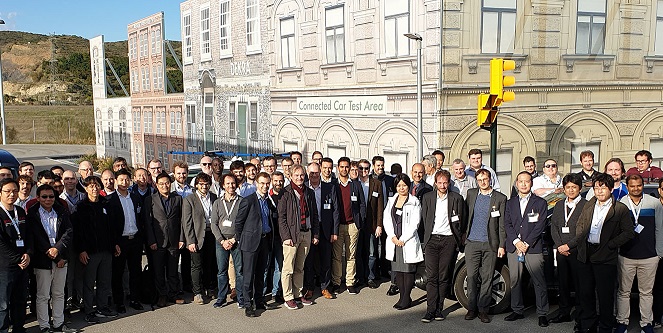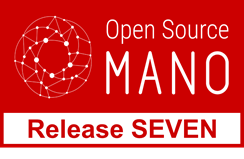The ETSI Industry Specification Group (ISG) for Network Functions Virtualisation (NFV) has started working on its next specification release, known as Release 4. While NFV-based deployments are expanding worldwide and show the benefits of network function virtualization, new technologies are expected to be leveraged and features are being added in support of 5G and novel fixed access network deployments that are emerging in many countries.
Release 4 addresses several new issues in the following technical areas: the evolution of the NFV framework to support the most recent cloud, software, and virtualization techniques; novel management architectural styles and operationalization aspects, leveraging virtualization characteristics to simplify deployments; and increased support for automation. While the ETSI ISG NFV is transitioning into the new release, the group will also continue the maintenance of Release 2 specifications, dealing with implementable protocol and data models, as well as their counterpart testing specifications to the end of 2019 and into 2020.
The first ETSI C-V2X Plugtests, performed in partnership with 5GAA, came to a close with a success rate of 95% of the executed tests, showing an extremely positive level of multi-vendor interoperability. 320 test scenarios were executed in lab and field environments for interoperability with 70 people present onsite for testing.
This event enabled vendors to run test sessions to assess the level of interoperability of their implementation and validate the understanding of the ETSI TC ITS and 3GPP standards. The ETSI 5GAA joint workshop which was organized in parallel, addressed C-V2X interoperability and deployment. Leading speakers from the European Commission, the Dutch Ministry of Infrastructure and Global Certification Forum presented the latest updates on ITS deployments and certifications. This week-long face to face PlugtestsTM , provided an opportunity to test C-V2X devices. Field interoperability testing included road hazard signalling, road works warning, longitudinal collision risk warning and intersection collision risk warning.
ETSI has announced two major specifications from the ETSI Zero-touch network and Service Management (ZSM) Industry Specification Group. ETSI GS ZSM 001 describes ZSM Requirements and ETSI GS ZSM 002 defines the ZSM Reference Architecture. The glossary of terms and concepts related to ZSM is provided in ETSI GS ZSM 007 that was published along with these specifications.
ETSI GS ZSM 001 examines various business-oriented scenarios and the related automation challenges faced by operators and other industry sectors, and defines the architectural, functional and operational requirements for end-to-end network and service automation. The ZSM architecture specified in ETSI GS ZSM 002 was designed to satisfy these requirements. The architecture is modular, flexible, scalable, extensible and service-based. It is designed for closed-loop automation and optimized for data-driven machine learning and artificial intelligence algorithms.
The ETSI Open Source MANO group unveiled its latest release, OSM Release SEVEN. This release brings cloud-native applications to NFV deployments, enabling OSM to on-board over 20,000 pre-existing production-ready Kubernetes applications, with no need of any translation or repackaging. OSM release SEVEN allows you to combine within the same Network Service the flexibility of cloud-native applications with the predictability of traditional virtual and physical network functions (VNFs and PNFs) and all the required advanced networking required to build complex end to end telecom services.
In addition, Release SEVEN extends OSM's SDN framework to support the next generation of SDN solutions providing higher level primitives, increasing the number of available options for supporting I/O-intensive applications. Furthermore, the plugin models for intra and inter-datacenter SDN have been consolidated, and the management, addition and maintenance of SDN plugins significantly simplified. Release SEVEN also brings major enhancements designed to improve the overall user experience and interoperability choices. This includes an improved workflow for VNF configuration which allows much faster and complex operations, and the support of additional types of infrastructures, such as Azure and VMware's vCD 10, etc……
CEN, CENELEC and ETSI, the three European Standardization Organizations (ESOs), jointly developed EN 301549:2019 ‘Accessibility requirements for ICT products and services’. The new standard is intended in particular for use by public authorities and other public sector bodies during procurement, to ensure that websites, software and digital devices are more accessible – so they can be used by persons with a wide range of disabilities.
EN 301549:2019 sets out the functional accessibility requirements that can be applied to all digital technology, including websites, software, electronic devices, and mobile apps. The aim is to ensure that ICT products and services are accessible either directly or through compatibility with assistive technologies such as text-to-speech, so that everyone can access information and use services that are being delivered electronically. The new standard is a revision of a previous version, published in 2018. It sets out the functional accessibility requirements that can be applied to all digital technology, including websites, software, electronic devices, and mobile apps.
ETSI TC Smart Card Platform, that standardized the former generations of SIM cards, has been working on a brand-new security platform called Smart Secure Platform (SSP). The ETSI committee has unveiled the first three technical specifications to launch this new security platform.
The ETSI Smart Secure Platform offers an open platform for multiple applications with various physical interfaces and form factors. The new flexible file system and built-in capabilities support several authentication methods, as well as features defined for a UICC - the current security platform used, for instance, for the SIM card - such as a toolkit or a contactless interface. SSP is a highly secure, scalable, thus cost-efficient solution optimized to fit many requirements, from IoT applications to complex solutions, hosting several applications such as banking and payment, ID management and access to mobile networks. Furthermore, the SSP is backwards compatible to the UICC. The three specifications cover the general technical characteristics of the Smart Secure Platform with ETSI TS 103 666?1, the integration of the Secure Element into a System on Chip (SoC) solution in ETSI TS 103 666?2 and, as the first protocol between the Smart Secure Platform and the outside world, the Serial Peripheral Interface (SPI) which is specified in ETSI TS 103 713.











